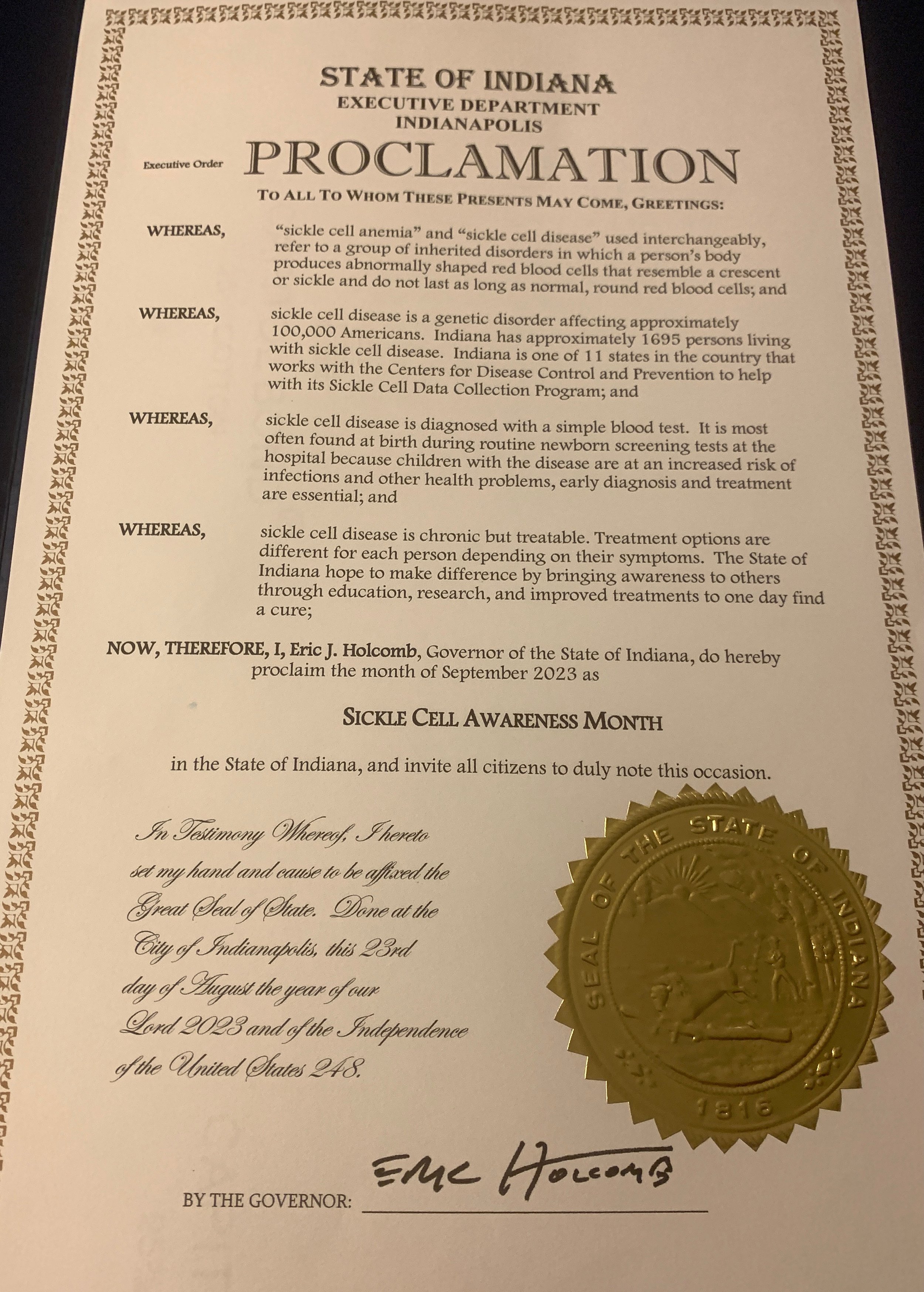Summit City Painted Red

By Rev. Christopher W. Riley
If you drive across the Martin Luther King, Jr. Bridge and zip around downtown Fort Wayne, you will notice bright red bows adorning light posts and wonder the cause!
Sickle Cell Disease Awareness and Education. It is not just the red bows but each bow has a fact regarding the effects of the disease. Take the time and learn more about the disease that can result in the following:
(According to the Sickle Cell Disease of America Association, Inc.)
• Chronic severe and unpredictable pain
• Anemia
• Frequent infections
• Swelling in extremities
• Vision problems/blindness
The Timothy Lymon Sickle Cell Foundation, Inc. is doing the work of advocacy and awareness within the community. The foundation’s facilitator Beverly Lymon who proudly represents the organization named in memory of her youngest brother who lost his battle with Sickle Cell Disease in 1983 at 17 years of age can be found assisting youth and young adults.
“We try to educate people about the disease,” Lymon said. “We have to educate the youth about disease, it is important for them to know the type of sickle cell they have if it’s the SS the SC and their siblings as well because the disease not only affects youth, it affects the whole family.”
In addition to youth, the foundation also assists adults who are suffering with Sickle Cell Disease. One of the adults that has benefitted from Lymon’s support in navigating local and regional resources is Duane Love, 49 who has been dealing with Chronic Sickle Cell Disease since he was a child. His earliest memories are being 7 or 8 years of age and being hospitalized for a month. At that time, blood transfusions were the answer. It wasn’t until he was 32 or 33 that medical doctors informed him that he had too many blood transfusions that was causing an iron overload.
According to the American Red Cross, the first Sickle Cell Disease discovery was made in 1910 and an approved drug to treat adults living with SCD was not approved until 1998.
“It is important for people to understand that adult Sickle Cell patients are not drug seekers, they are patients that want to be treated with dignity and respect. To this end, they often refuse pain medication and suffer their crisis at home.” said, Lymon.
After a series of medications and treatments, Love and his team of doctors have found the best results with Adakveo which is administered monthly. Love has also been able to overcome years of depression and loneliness by channeling his energy in coaching 7 and 8-year-olds in Metro Football. His team recently won Pee Wee Super Bowl.
“I have been blessed with a very supportive family and a sister who is a Registered Nurse.” said, Love.
The Lymon Foundation was grateful for the support of the National Honor Society from Snider High School, Goal Y Amigos of Ivy Tech Community College, The Bloom Project, The Junior Warriors and Sickle Cell Parents to assist with the hanging of the bows and disseminating the very important facts designed to engage the community in Sickle Cell Disease Awareness. The organization is planning a Blood Drive in February as the family posthumously celebrates Timothy Lymon’s 58th Birthday. The Lymon Foundation has red ribbons for everyone to wear to promote education, medical research and awareness. “Improve someone’s living by wearing a red ribbon”
Lymon’s biggest prayer is that “there will one day be a cure for Sickle Cell Disease.”
September is designated as National Sickle Cell Awareness Month. According to the Sickle Cell Disease Association of America, Inc. Sickle cell disease (SCD) is an inherited blood disorder in which red blood cells may become sickle-shaped and harden. For a baby to be born with sickle cell disease, both parents must carry a sickle cell trait or genes for another hemoglobin like HbC, HbE or beta thalassemia. Sickle cell disease is not contagious, and there is no universal cure.
• About 1 in 13 African Americans carry the sickle cell trait, and many do not know they have it.
• An estimated 100,000 people in the U.S. have SCD.
• Approximately 2,000 babies are born with SCD annually in the U.S
